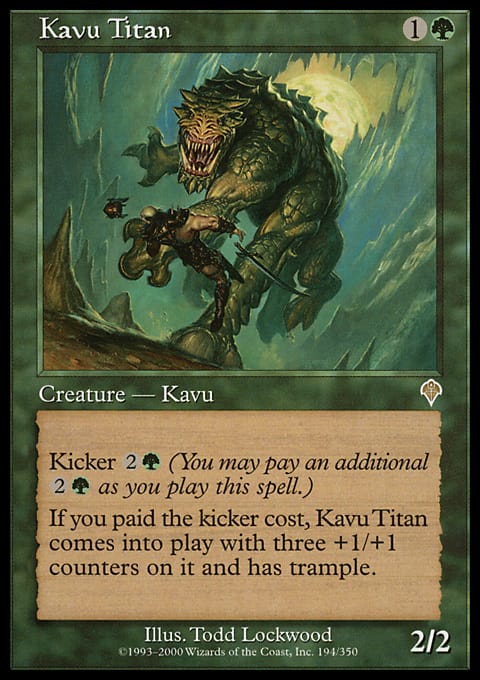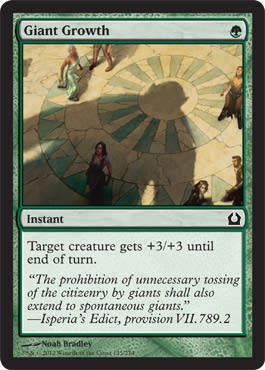Most of the time when I’m thinking about Magic, it’s about things like these:
- What’s the best way to draft this format?
- What deck would be great in Standard right now?
- What should I write about this week?
- What’s the next Grand Prix I should go to?
- When can I start playing mono-red again?
As a game designer, I also sometimes think about it from a design and development perspective. When I’ve worked on or played other TCGs, they inevitably are compared to Magic. What makes them different, and more importantly, in what ways are they better than Magic? In order to do this, I need to identify the areas where Magic is the weakest from a design perspective. While most of the time I think about how to change or fix these things in the context of an entirely different TCG, in many cases, it’s actually possible for Wizards R&D to address some of these issues within Magic.
Mana Problems
The most obvious design problem with Magic is the near-constant possibility of mana-screw and mana-flood. How many Game 3s have you had in which one player says to the other, “I hope neither of us is mana-screwed this game.” How many times have you drafted a great deck only to lose crucial games to mana problems?
The spin here is that the possibility of mana problems means that the game is less like chess and that any player can win any given game, thus giving new players hope for the occasional victory against experienced players. There are several major problems with this spin. First of all, even if there were never any mana problems in the game, there would still be enough randomness and hidden information to make the outcomes of games considerably more random than chess. Poker doesn’t need mana-screw to enable a newbie to beat a pro on occasion, and neither does Magic. Second, if you finally win a game against a pro because he or she is mana-screwed, is that actually satisfying? Finally, this also means new players will lose games to mana problems, and given how awful that feels, it seems like a bad way to suck them into the game. The negatives heavily outweigh the positives, and I’m not even sure there are any true positives to mana problems.
Obviously, the dynamic of lands and spells is an integral part of the game and not going away any time soon. So, what can R&D do to help? They are of course aware of the problem and periodically will make some effort to address it in a specific set or sets. Typically, this is accomplished by the invention of a mechanic that relieves some of the pressure. Two of my favorites are kicker and landcycling.
Landcycling is the more obviously helpful. If your draw is too mana-tight, a landcycler is a spell that can be replaced by a land for only 2 mana. If your draw is mana-heavy, that’s fine, too, because most landcycling cards are expensive, powerful, late-game cards that are well-suited to a land-heavy draw.
Kicker is another mechanic designed to be useful whether you have a small number of lands or many. Having a lot of cards with kicker in your deck can effectively lower your mana curve, making mana-screw more survivable. By the same token, having a lot of kicker in your deck can effectively raise your curve and give you more game when you mana-flood.
These sorts of mechanics are solid game-development approaches to alleviating the problem. I suggest that not only should kicker and landcycling be made into core-set mechanics but that R&D should consider some mechanics that address the problem even more blatantly.
How about a cycle of split cards that are both lands and spells? For example, you could have a green card that, on one side, is a nonbasic land that enters the battlefield play tapped and taps for ![]() . On the other side, it could be sorcery costing
. On the other side, it could be sorcery costing ![]()
![]() that puts a 5/5 Wurm token onto the battlefield under your control. It could be called Earth // Wurm or something. Imagine having three cards like that in a Draft deck. Suddenly, your forty-card deck can have both nineteen lands and twenty-four spells, though most people would try to run the edge a little anyway with eighteen and twenty-five or seventeen and twenty-six. At least at that point, it can be more easily adjusted for your specific tolerances.
that puts a 5/5 Wurm token onto the battlefield under your control. It could be called Earth // Wurm or something. Imagine having three cards like that in a Draft deck. Suddenly, your forty-card deck can have both nineteen lands and twenty-four spells, though most people would try to run the edge a little anyway with eighteen and twenty-five or seventeen and twenty-six. At least at that point, it can be more easily adjusted for your specific tolerances.
The other major way to address the problem is to increase the number of cheap cantrips and the number of good mana-sinks in the game. If you have a forty-card deck with seventeen lands and twenty-three spells, you should do okay much of the time, but you’ll still mana-stall from time to time. If six or seven of those spells are cheap cantrips, you should be able to draw out of a mana stall much quicker and perhaps avoid it altogether most games. Of course, if too many of the cards in your deck consist of cheap cantrips and you still have a standard mana base—like seventeen out of forty—you quickly become very prone to mana-flood. This can be addressed by having a lot of cards to sink excess mana into. This could be any kind of permanent with a useful ability that costs mana to use that you can make use of over and over. It can also be an instant or sorcery that has an ability you can use when it’s in the graveyard for a mana cost, such as returning it to your hand.
Skill-Testers
Some Magic cards aren’t really designed to be played. They are called skill-testers. To be fair to Wizards, they make fewer of these than they used to, but they do still make them. How often have you drafted a deck in Magic 2014 Core Set and main-decked a Shadowborn Apostle, a Demolish, or a Cyclops Tyrant? If you did, are you really ready to admit it?
Wizards makes skill-testers to make people feel smart when they’re evaluating cards, such as in Draft—especially new players. They want to help players learn basic card evaluation by making some cards that are obviously bad. Then, as you pass a last-pick Apostle to the guy on your left, you can feel good about yourself.
I think Magic would be a better game without such blatant skill-testers. Modern Masters is a good example of the kind of approach I think would be better for all sets. Instead of having a bunch of unplayable cards that inevitably show up when you have one or two cards left in the pack, virtually every card could be perfectly reasonable and solidly functional as long as you put them into the right archetype. This helped make Modern Masters a superb set for Draft.
The skill-testing can be in finding the right cards for your specific deck—as opposed to judging which cards are complete garbage. This would have the added benefit of creating greater variation in Constructed, as every card in a given set has the potential to show up somewhere, and we have fewer cards that might as well just be thrown into the trash as soon as you’ve finished opening packs or finished drafting.
I’m not saying we can’t have cards that are slightly overcosted, such as Siege Mastodon or Pillarfield Ox. I understand we need power variation at each cost, but at least the Mastodon or the Ox can be a reasonable twentieth card in a Draft deck, if an unexciting one. I do think that it would be best to keep these types of cards to a minimum though.
It Ain’t Easy Being Green
Green gets the short stick in terms of mechanics on the Magic color wheel. It’s the one color with virtually no removal or evasion, and it supposedly compensates by having bigger creatures. I understand that it’s more complicated than that of course: Green has color-smoothing, mana-ramp, good combat tricks, and access to all types of noncreature removal. That being said, creature removal and evasion are the two basic must-haves in Limited play, and things like card-draw and powerful late-game bombs are probably next, all of which are things that green has in rather limited supply.
The best green commons in M14 are probably Giant Growth and Rumbling Baloth, with a huge drop-off after that. In black, you have Doom Blade, Quag Sickness, Wring Flesh, Accursed Spirit, and Deathgaze Cockatrice all at that power level or better. Blue has Trained Condor, Nephalia Seakite, Messenger Drake, Claustrophia, and Frost Breath. You get the picture.
This is in part because green has fewer powerful dials to play with. You can’t go overboard with any one dial. For example, if instead of red having just two good common burn spells in M14, it had five, red would be way too powerful in Draft, even if none of them exceeded Shock and Chandra's Outrage in power level. In much the same way, you couldn’t give black four common Doom Blades. You need to spread out what’s good about a color over more than one thing. Creatures and their sizes are just too basic of dials to be green’s big thing. If you give them one creature like Rumbling Baloth, that’s fine, but if you give them a really sexy creature at every point in the curve, green would suddenly be way too good in comparison to the other colors.
While green often has its problems covered up in Draft by either being useful for multicolored decks or by virtue of being under-drafted, it doesn’t mean there aren’t issues. Very few mechanics are the exclusive property of one color, and the solution to this problem could be even more sharing of mechanics in the color wheel. For example, I’d love to see green have more intimidate and perhaps a bit of direct damage, like a 3-damage-for-3-mana instant. Card-draw and some cool graveyard mechanic are some other possibilities.
These are three R&D issues that I’d like to see addressed; how about you? Are there things you’d like to see WotC doing differently in how they approach set design? This is an ongoing process of course. As the years go by, R&D is becoming better at it. Simply compare the design of any recent set to the design of any set from the first few years that Magic was on the market, and you’ll see what I mean. While they are definitely improving, there’s no reason they should stop trying to do so.


























